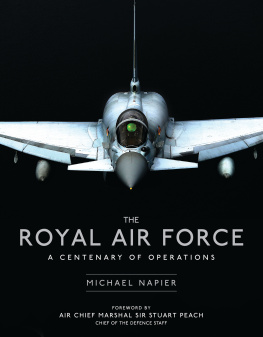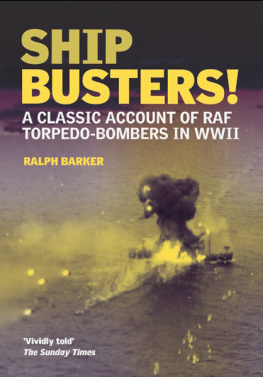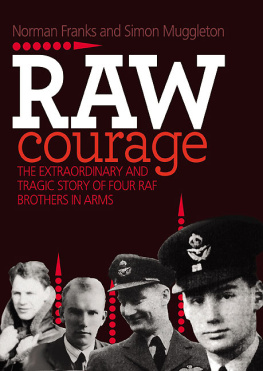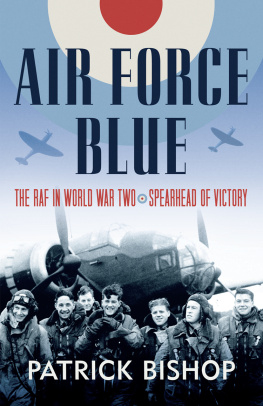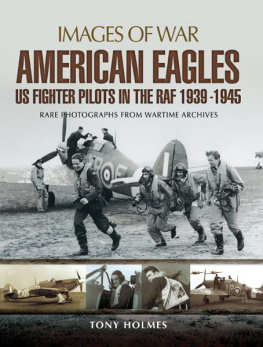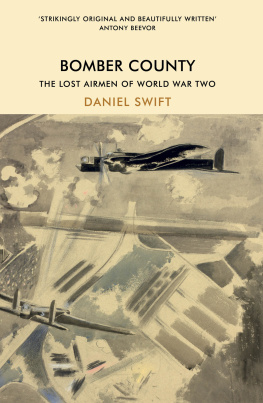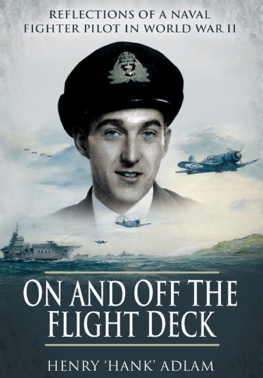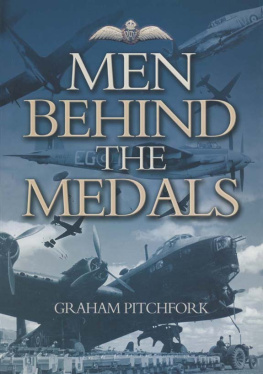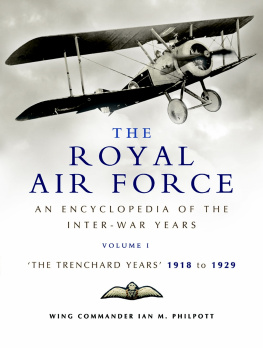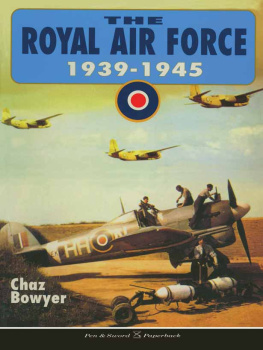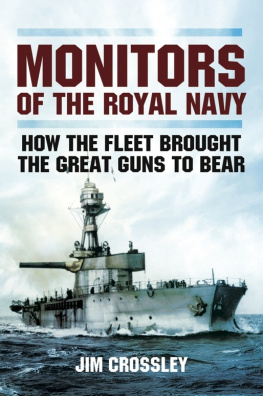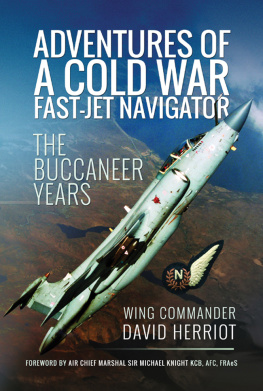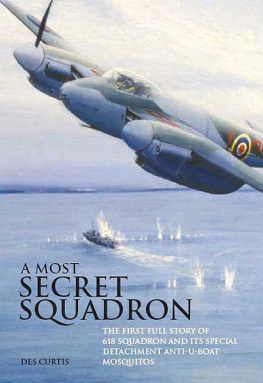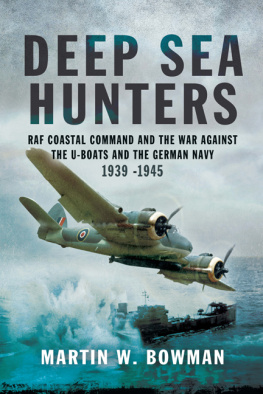
C ONTENTS
BY Air Chief Marshal Sir Stuart Peach

Osprey Publishing
c/o Bloomsbury Publishing Plc
PO Box 883, Oxford, OX1 9PL, UK
or
c/o Bloomsbury Publishing Plc
1385 Broadway, 5th Floor, New York, NY 10018, USA
E-mail:
www.ospreypublishing.com
This electronic edition published in 2018 by Bloomsbury Publishing Plc
OSPREY is a trademark of Osprey Publishing, a division of Bloomsbury Publishing Plc.
First published in Great Britain in 2018
2018 Michael Napier
All rights reserved
You may not copy, distribute, transmit, reproduce or otherwise make available this publication (or any part of it) in any form, or by any means (including without limitation electronic, digital, optical, mechanical, photocopying, printing, recording or otherwise), without the prior written permission of the publisher. Any person who does any unauthorised act in relation to this publication may be liable to criminal prosecution and civil claims for damages.
Every attempt has been made by the Publisher to secure the appropriate permissions for material reproduced in this book. If there has been any oversight we will be happy to rectify the situation and written submission should be made to the Publisher.
A CIP catalogue record for this book is available from the British Library.
ISBN: 978-1-4728-2540-7 (HB)
ISBN: 978-1-4728-2539-1 (eBook)
ISBN: 978-1-4728-2538-4 (ePDF)
ISBN: 978-1-4728-2541-4 (XML)
Conceived and edited by Jasper Spencer-Smith.
Artwork: Nigel Pell.
Produced by Editworks Limited,
Bournemouth BH1 4RT, England
Originated by PDQ Digital Media Solutions, Bungay, UK
All images are from the authors own collection, unless otherwise stated.
An RAF Typhoon appears like a shark from the depths. This photograph was taken from the back of a transport aircraft over a lake in the Baltic region where the Typhoons were deployed in the NATO Baltic Air Policing Role. (MoD/Crown Copyright 2014)
A Victor K2 from 55 Squadron RAF Marham on one of its last flights before the end of the aircraft types operational era. (Crown Copyright 2006)
Two Harrier GR7s in formation. (Crown Copyright 2002)
Air Chief Marshal Sir Stuart Peach (Crown Copyright)
Osprey Publishing supports the Woodland Trust, the UKs leading woodland conservation charity. Between 2014 and 2018 our donations are being spent on their Centenary Woods project in the UK.
To find out more about our authors and books visit www.ospreypublishing.com. Here you will find our full range of publications, as well as exclusive online content, details of forthcoming events and the option to sign up for our newsletters. You can also sign up for Osprey membership, which entitles you to a discount on purchases made through the Osprey site and access to our extensive online image archive.
FOREWORD
Air Chief Marshal Sir Stuart Peach GBE, KCB, ADC, DL, Chief of Defence Staff
As the Royal Air Force prepares to celebrate 100 years of independence, this book offers an important record of the significant contribution of the Royal Air Force over the last century. From the strategic to the tactical, the structure and reputation of the Service has grown through the application of technology by incredible people.
The author, himself a former Royal Air Force Tornado pilot, describes the journey in a chronological format. This works well to describe the transformation of the aeroplane from an object of wonder in 1914 to a formidable part of the national defences in 1918. Following the Great War, little wars went on. In the expanded mandate of the British Empire, air elements were despatched to Iraq and Afghanistan. One hundred years later the British Government still despatches the Royal Air Force to support sovereign governments, to counter terrorism and to support our vital national interests. That much has not changed.
What has changed is the range and breadth of capabilities of the Royal Air Force. The types of mission remain constant: deterrence, presence, precision strike, reconnaissance, mobility, refuelling, and force protection. The way we conduct those missions has evolved to include space and cyber warfare. The chronology demonstrates through world wars, small wars and the Cold War that the people remain committed, determined and brave.
As the Royal Air Force turns one hundred, this book adds to our knowledge. In the spirit of per ardua ad astra, I commend it.


C HAPTER 1
AN INDEPENDENT SERVICE
1918 - 1922

A Fairy IIIF of 267 Squadron is hoisted aboard the seaplane carrier HMS Ark Royal in the early 1920s. The fledgling RAF inherited all of the commitments of the Royal Naval Air Service (RNAS), including the provision of aircraft and flying personnel to support naval operations. HMS Ark Royal was closely involved with the deployment of RAF aircraft to Russia, Turkey and Somaliland in the immediate post-war years. (Jarrett)
In late 1917, air power throughout the British Empire was exercised by the Royal Naval Air Service (RNAS) and the Army Royal Flying Corps (RFC). Each arm had its own command structure and was serviced by its own procurement and supply chain. As might be expected, the RNAS was mainly a maritime force, operating both land and seaplanes, as well as flying boats, balloons and airships from coastal bases around the UK, but with units also based on the north coast of France and in the Mediterranean and Aegean Seas. Additionally, naval seaplane carriers gave the RNAS the mobility to operate further afield (such as East Africa and the Far East) if needed. RNAS aircraft were mainly employed for anti-submarine operations and coastal reconnaissance, but there was also a small number of fighter and bomber aircraft based in both France and the Aegean. The main bulk of the RFC was deployed on the Western Front in France and Belgium, but RFC squadrons also supported the army in Italy, Greece, Palestine, Mesopotamia and India. A handful of fighter squadrons were retained in the UK for home defence against German heavy bombers and Zeppelins (airships); another small number of bomber squadrons in France were positioned for independent operations over Germany; all other front-line RFC flying squadrons were allocated to the army at division level in each theatre of operations. These units were divided into Army and Corps squadrons. The Army squadrons comprised fighter units, tasked with achieving air superiority over the enemy air services, and bomber units tasked with attacking military targets such as headquarters units and similar facilities behind the enemy frontlines. The Corps squadrons were chiefly used for artillery observation and photographic reconnaissance, which were, perhaps, the two least glamorous yet most important and successful of the roles fulfilled by aircraft during the entire war. During army offensives, Corps aircraft would also be used for contact patrols in which they would fly low over the battlefield to establish the positions of the forward army units and report them back to headquarters.

